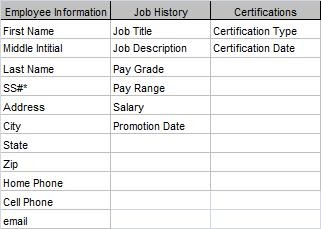copperwasher
Board Regular
- Joined
- Mar 1, 2016
- Messages
- 84
- Office Version
- 365
- Platform
- Windows
Hi there
I have a three table Access Database
Table1: The list of symbols and the respective market
Table2: Opening the Trade
Table3: Closed Trades
What I am looking to do (if possible) is use the input data from Table 1: Symbol, Market, Entry Date, Entry Price, Buy Sell, etc and have this data populate the Closed Trades Table (when the time comes to closing the trade) rather than having to type it in again.
Is this possible?
I have a little bit of experience with Access, I am a keen learner, so any help would be much appreciated
CW
I have a three table Access Database
Table1: The list of symbols and the respective market
| ID | Symbol | Market |
| 1 | AUDCAD | Forex |
| 2 | AUDCHF | Forex |
| 3 | Gold | Metals |
| 4 | Silver | Metals |
| 5 | indices | |
| 6 | Bitcoin | |
| 7 | Commodities | |
| 8 | Oil Gas | |
| 9 | BlueChip |
Table2: Opening the Trade
| ID | Symbol | Market | Entry Date | Entry Price | Buy Sell | Current Price | Current Date | Trade Days Open | Difference | Winning Losing |
| 1 | AUDCAD | Forex | 09/11/2020 00:00 | 1.002 | Buy | 1.003 | 20/11/2020 00:00 | 11 | 0.00 | winning |
| 2 | AUDCAD | Forex | 20/11/2020 00:00 | 1.002 | Buy | 1.001 | 28/11/2020 00:00 | 8 | 0.00 | Losing |
| 5 | AUDCAD | Forex | 09/11/2020 00:00 | 1.002 | Sell | 1.001 | 20/11/2020 00:00 | 11 | 0.00 | winning |
| 6 | AUDCAD | Forex | 20/11/2020 00:00 | 1.002 | Sell | 1.003 | 28/11/2020 00:00 | 8 | 0.00 | Losing |
Table3: Closed Trades
| ID | Symbol | Market | Buy/Sell | Opening Date | Exit Date | Days for Trade | Start Price | Price Exit | Difference | Won/Lost |
| 1 | AUDCHF | Forex | Buy | 09-Nov-20 | 12/11/2020 00:00 | 3 | 1.002 | 1.003 | 0.00 | Won |
| 2 | AUDCHF | Forex | Buy | 20-Nov-20 | 28/11/2020 00:00 | 8 | 1.002 | 1.001 | 0.00 | Lost |
| 4 | AUDCHF | Forex | Sell | 06-Nov-20 | 26/11/2020 00:00 | 20 | 1.002 | 1.001 | 0.00 | Won |
| 5 | Silver | Forex | Sell | 05-Nov-20 | 27/11/2020 00:00 | 22 | 1.002 | 1.003 | 0.00 | Lost |
What I am looking to do (if possible) is use the input data from Table 1: Symbol, Market, Entry Date, Entry Price, Buy Sell, etc and have this data populate the Closed Trades Table (when the time comes to closing the trade) rather than having to type it in again.
Is this possible?
I have a little bit of experience with Access, I am a keen learner, so any help would be much appreciated
CW








